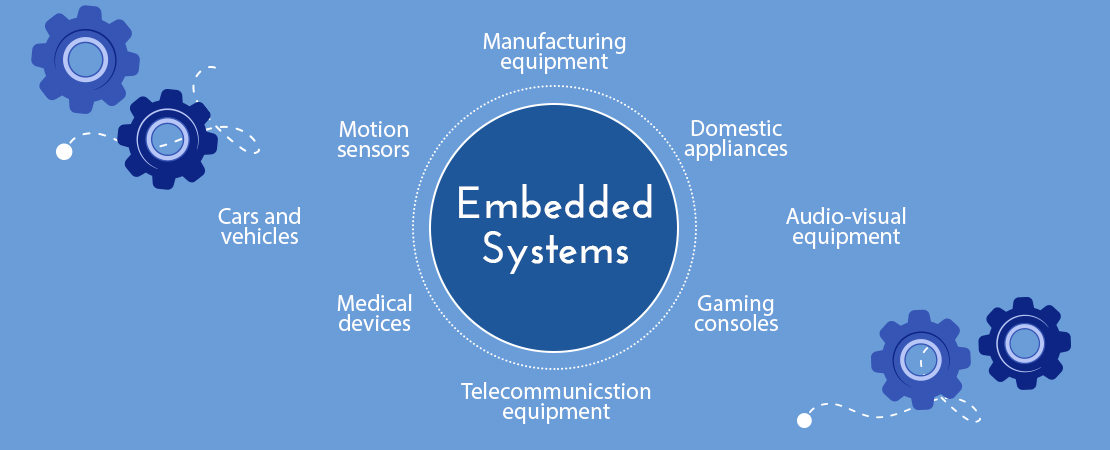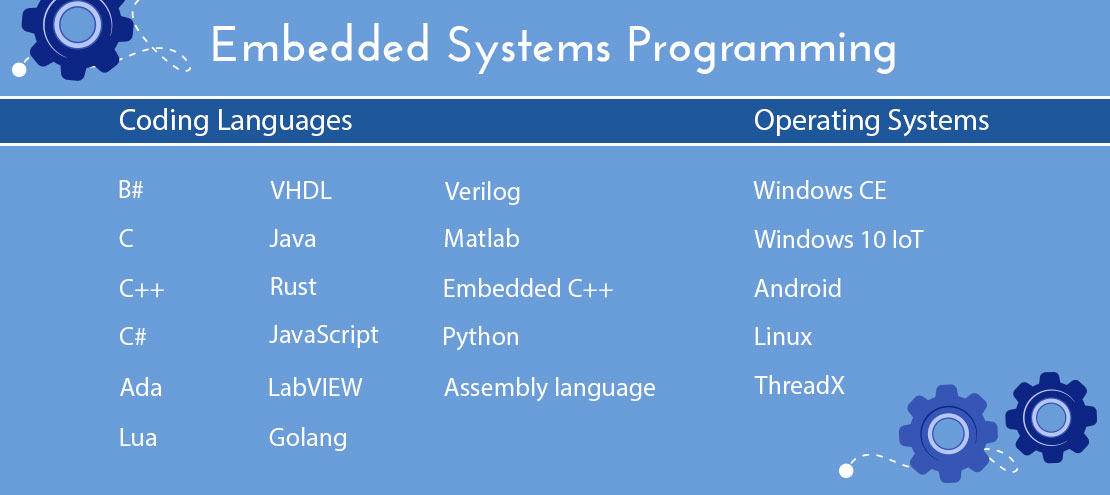All You Need to Know About Embedded Systems Development
Smart devices have made our lives simpler and more convenient but what do we know about devices we use daily apart from what buttons to push? There are many kinds of types of embedded systems based on their usage, including real-time, mobile, small, medium, and large-scale embedded systems. These are some of the broad categories and there are many subcategories.
In today’s article, we are going to explore embedded software development and its strong impact on various business domains.
What Is an Embedded System?
An embedded system is a non-computer device with integrated software based on microprocessors and micro-controllers designed to control devices or machines that are not typically considered computers. It may perform a specific function or work as a part of a big system.
From mobile phones and robotic equipment to coffee machines, microwaves, fridges, air conditioning, and traffic lights, embedded systems are present in all of these devices.

What Makes Embedded Systems So Appealing?
Strong Performance
The performance of the embedded systems depends on a number of factors. For instance, if the embedded system is meant to perform just one specific task the device will be fast and reliable.
By contrast, the performance of complex embedded systems that include multiple hardware and software elements depends on the tasks they should fulfill and the power of their elements.
Small Size
Embedded systems are much smaller in size compared to traditional computers, which makes them compact and portable and useful for mass production. Embedded systems are faster due to their small size. The loading time is shorter since there are fewer elements to manage.
Another advantage of the small size of the embedded devices is that they are less expensive than large systems and consume less power.
Ease of Management
Embedded devices are pretty easy to manage because the elements used for their creation are cheap and long-lasting. In addition to that, they require less maintenance. However, the drawback related to management is that embedded systems may be complex so they may require a competent embedded systems engineer who understands the different aspects of the systems and knows how to fix the problem.
Cost-Effectiveness
All the elements in embedded systems like the read-only memory, random access memory, processor, Wi-Fi chips, motherboard, etc. are made of materials that consume less power. Since embedded systems consume less power, they will also help to save money after installation. What is more, given that all those elements are small in size the material costs of making those parts are lower too.
Practical Use
The range of tasks of embedded systems is almost countless. Here are some of the most popular use cases.
Automotive sector: Almost every modern-day car has an embedded system, be it a music system, a navigation system, etc. These systems improve the device’s functionality and provide safe and comfortable driving.
Healthcare: Biomedical applications can help allow doctors to remotely monitor patients’ health and prescribe treatment through telemedicine and other remote systems.
Manufacturing: Due to the active implementation of robotics, Artificial Intelligence, the Internet of Things, and Big Data into production processes, factories can control all types of automation systems, from online monitoring and remote control of equipment to data collection and replacing employees on assembly lines.
Smart home: Modern houses are full of electronic devices and household appliances: digital alarm clocks, washing machines, dishwashers, air conditioners, and others, all using embedded systems. With the advancement of internet technologies, users got a chance to manage these devices at a distance. In fact, most electrical devices have an embedded system of some kind to ensure they can work properly, and that’s how the concept of smart home emerged.
Communication: Mobile phones, laptops, and other devices use embedded systems to help us communicate.
Entertainment: Television sets, cameras, and other entertainment devices also comprise embedded system chips which make them much faster.
Smart cities: Embedded systems are an integral part of smart parking, traffic control, surveillance, pollution monitoring, and various community services, creating a new smart ecosystem to streamline processes in large densely populated cities.
Aerospace and military: High-performance sensors, communication and navigation systems are critical for aerospace and military activities. In fact, IoT and embedded systems are the ones responsible for airplanes landing and taking off and satellites orbiting the Earth while sending and receiving signals.
Best Programming Languages for Embedded Systems Programming
Embedded systems are different from traditional computer-based programs and require a broad array of tools for programming and operation.

- C and C++ are among the most widely used languages for embedded systems. They ensure speed, the ability to access low-level system components, and little memory consumed by the programs.
- C# is also a good option for IoT and embedded systems because programs built in C# are compatible with different architectures.
- Java is popular for creating programs for embedded systems due to its powerful libraries and the Java Virtual Machine that allows building portable apps compatible with different types of hardware.
- Python has been gaining popularity for embedded systems development in recent years because it’s concise and readable, which streamlines the development process. What is more, it can collect, store and analyze tons of data from real-time embedded systems.
The list of languages can be continued with JavaScript, Objective C, Qt, .NET, and many other languages.
Bottom Line
Embedded systems are a good choice for almost every industry sector where efficiency, ease-of-use, affordability, consistency in production, durability, low energy consumption, and low IT maintenance are of primary importance.
However, companies can easily get lost trying to create their own solutions. Embedded systems creation requires specialized knowledge and investing too many resources in development can have a detrimental effect on the growth of their business. There are many long-term costs associated with building an embedded system and it’s highly important to calculate them all. If you need professional help, our specialists can analyze your business case and suggest a solution that will help you build a strong and reliable solution.












